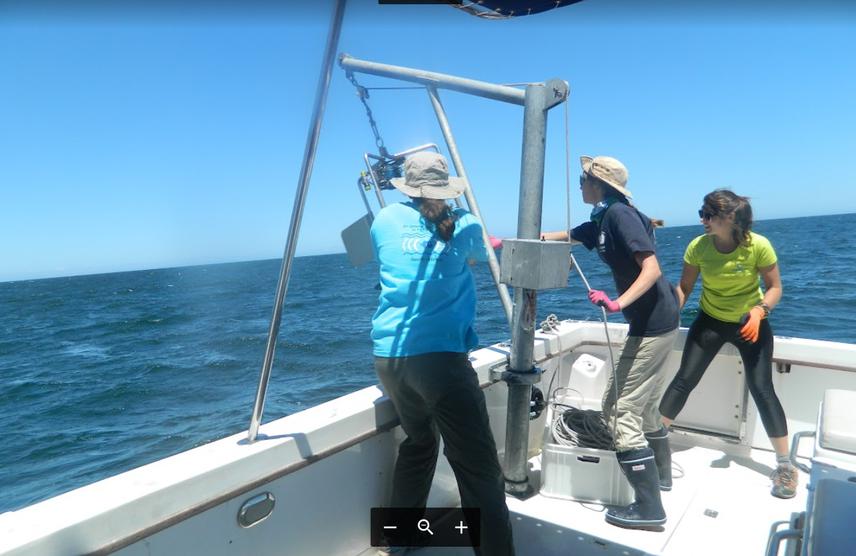Lauren De Vos
This project will use stereo-BRUVs technology to assess patterns in marine biodiversity across False Bay. Combining ecological and human-use data, this project will identify regions of vulnerability and compile scenarios for conservation planning in the bay.

Centuries of commercial fishing in False Bay have significantly impacted inshore fish populations. Its position at the confluence of two major oceanographic regimes makes the region both interesting and important for marine biodiversity. However, it is its importance to human-users that makes False Bay a pertinent study site. A growing urban population surrounds False Bay, with consequently increasing threats to biodiversity, predominantly in the form of pollution, coastal development and fishing. False Bay hosts a variety of ocean users, from fishermen to SCUBA divers and surfers, and forms an important part of Cape Town’s annual tourism income. Where biodiversity meets anthropogenic-pressures, an effective biodiversity monitoring strategy and informed conservation planning are essential to understand the system, manage resources and mitigate conflict.
Recent research has identified baited remote underwater video systems (BRUVs) and stereo-BRUVs as the most suitable methods for the long-term monitoring of reef fish, particularly for the temperate rocky reefs of South Africa. Non-extractive, with more modest field labour requirements and capable of deployment at greater depth and in marginal conditions, BRUVs confer several advantages over traditional monitoring methods. With recent advances in the accessibility, quality and affordability of camera equipment, stereo-BRUVs now facilitates size estimates for recorded species, making it a sound scientific tool with a low environmental impact. It is therefore considered the optimal method, affording researchers a non-extractive means of determining changes in fish populations over time. The data obtained using BRUVs has yet to be integrated into systematic conservation planning for the South African marine environment.
This project therefore represents the timely first-time integration of low impact BRUVs data into a conservation planning strategy. In a system where a lack of transparency also often undermines research outcomes and conservation plans, video monitoring represents a new step towards education from marine scientists. This project will use stereo-BRUV technology to sample the invertebrate and ichthyofaunal diversity of False Bay. The baseline relative abundance and diversity estimates achieved across seasons will contribute to understanding of community composition and distribution. The ecological data derived from the stereo-BRUV cameras will be overlain with fishing impact and distribution (“human use”) to predict high conflict regions (overlap) & correlate with vulnerable regions.